Every year nearly four million babies are born in the USA; this means that four million tiny humans need to be kept safe at all costs. While parents typically take the utmost care to baby proof their homes well before the arrival of their little bundle of joy, it is also important to take car seat safety seriously.
More than 6 million car accidents take place every year in the United States. Without excuse, parents should go the extra mile to ensure that their precious babies have the safest transportation conditions possible.
Thankfully vehicle manufacturers are increasing a number of car safety features to help protect even the littlest passengers. There are also a variety of gadgets you can invest in to help your car transport its most precious cargo safely.
Invest in the best possible car seat for baby.
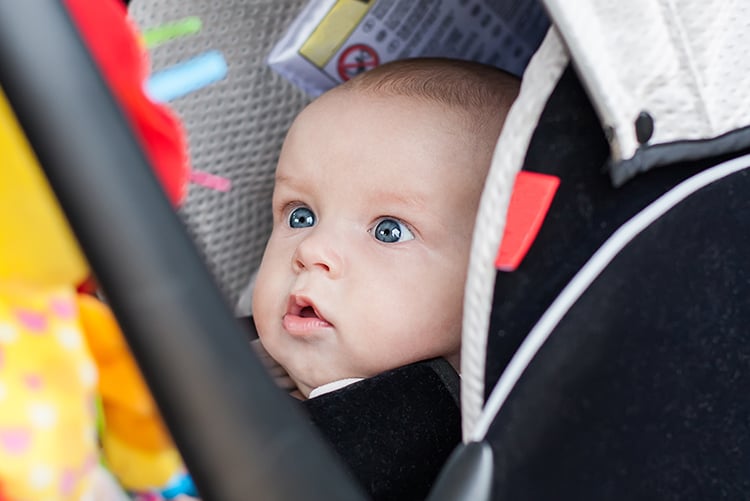
Purchasing the best possible car seat for your child is without a doubt one of the best investments you can make as a parent. With the market inundated with safety seats of different prices and designs, it is vital to conduct thorough research. Most importantly, you’ll want a car seat that suits your baby’s height and weight, fits in your car, and is easy to install. Many car seats come with extra safety features such as built-in leveling indicators, extra padding, shock absorption materials, and higher quality materials.
It is tempting to want to save money by purchasing a used car seat from an online marketplace, but when you do this you can’t be sure that the seat has never been in an accident. The last thing you want is a compromised car seat! Keep in mind that most car seats expire after about six years and are sometimes recalled. Check here to make sure your car seat has never been recalled.
Pro Tip: All car seats sold in the US are required to pass crash tests and meet the U.S. Federal Motor Vehicle Safety Standards. So, inexpensive seats actually meet the same standards as more expensive seats. One drawback to inexpensive car seats is comfort. A little extra money for the plush seat could help you keep your sanity if you plan to do a lot of driving!
The best car seats for babies.
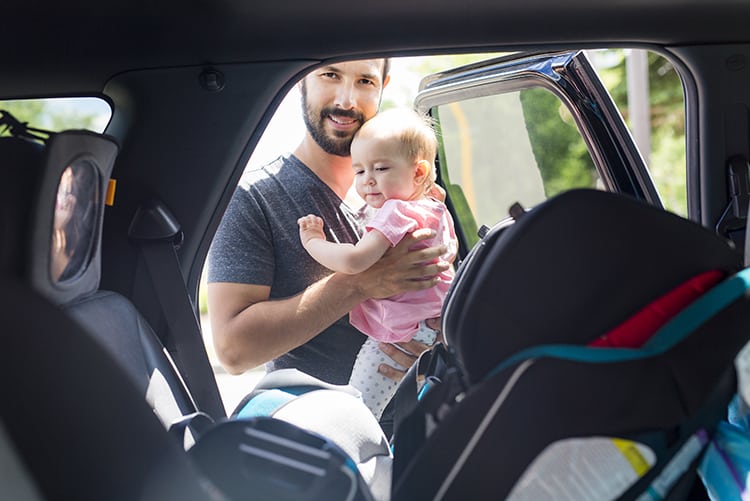
After consulting with their own experts, parents, and a Child Safety Passenger Technician, Babylist.com puts out two annual lists of the best car seats: one for rear facing infant car seats and another for convertible car seats, which can often be used for both rear and forward facing positions. Some of the best car seat offerings to look out for in 2021 include:
- Graco SnugRide SnugLock 35 infant car seat (safe, affordable, and easy)
- Nuna Pipa infant car seat (extra safety features)
- Chicco KeyFit 30 infant car seat (parent fave)
- Safety 1st Grow and Go 3-in-1 convertible car seat (great budget option)
- Clek Foonf convertible car seat (extra safety features, and fun to try and pronounce!)
- Graco 4Ever DLX 4-in-1 convertible car seat (grows with your child until they are out of a car seat)
All of the car seats listed above are top-of-the-line as far as design and car seat safety features go. They range in price from around $150-$500. They of course meet all required safety standards, and many have other perks such as being easy to clean or having extra features like visors and cup holders.
Follow all directions for proper installation.
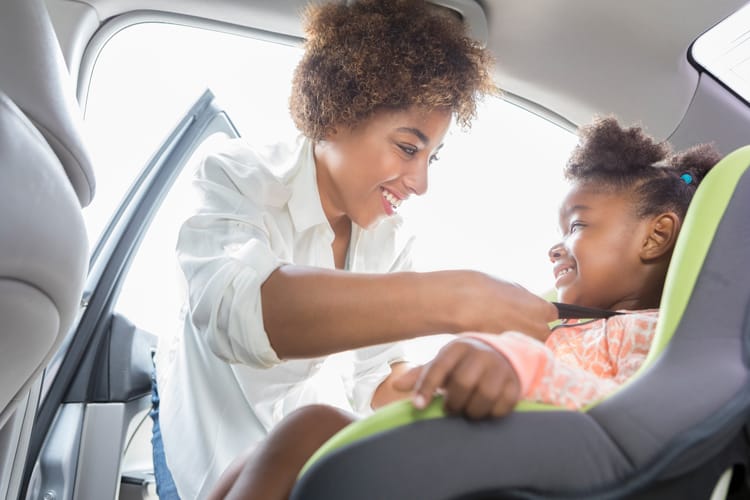
Now that you have a great seat, it’s important to carefully read the car seat manufacturer’s instruction manual and make sure you follow the installation directions carefully. Research from the National Highway Traffic Safety Administration shows that about 59% of seats are installed incorrectly! Along with the car seat manual, you’ll also want to review your vehicle’s manual to determine the best way to put the car seat in.
There are two installation options available with most seats and vehicles. Cars manufactured after 2002 will have the LATCH (Lower Anchors and Tethers for Children) system available in at least two spots in the back seat. This means you will find at least two sets of u-shaped bars hidden in the vehicle seat crack, and you’ll be able to attach your seat to these bars via little clips on either side of the car seat. There will also be a top anchor located somewhere behind the seat, and a third strap (the tether) attaches to this anchor.
It is equally safe to install a car seat using your vehicle’s seat belt as long as you are able to securely lock the seat belt in place once you’ve tightened it. Be sure the car seat doesn’t move more than an inch in any direction, or else it is probably too loose. There are very few vehicles that allow you to safely use both systems simultaneously; some parents may prefer one system over the other because they find it easier.
Again, review both manuals carefully and follow all guidelines. Many seats have multiple belt path and recline options that need to be adjusted to fit your child.
If you want reassurance from an expert, the National Child Passenger Safety website provides a searchable list of CPS technicians in your area that will check your seat for you. Many of these experts can be found at places like your local fire or police departments, and they’ll likely be happy to help free of charge.
Tot Squad is another great option to have your car seat checked or installed. Their CPSTs will guide you through a virtual or in-person installation.
Car seat safety when riding in a vehicle.
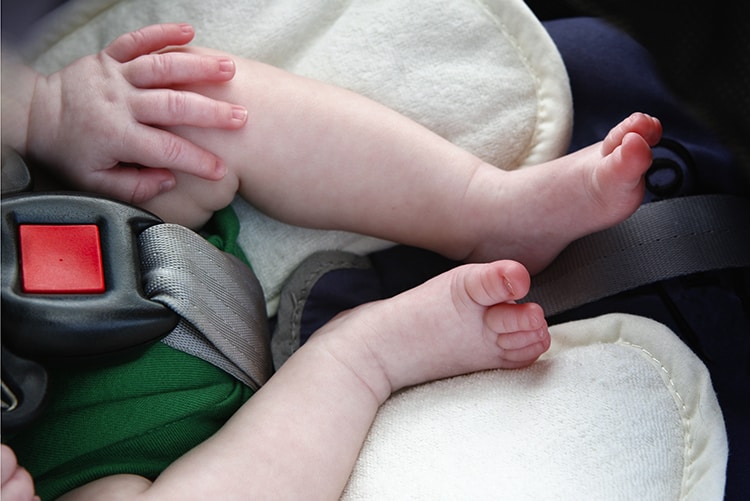
Babies should always travel in a safety seat that is installed in the back seat of a vehicle. The front airbags can be extremely dangerous to small bodies. If you drive a pickup truck or some other vehicle with no back seat, the American Academy of Pediatrics says “only place the infant in the front passenger seat if an airbag on/off switch is installed and turned off.”
Keep your babies in rear facing seats for as long as possible. Many states now require that a child be two years old before they can ride in forward facing car seats. The center spot is considered the safest, but some cars don’t offer the LATCH system in that middle seat, so you’ll want to weigh these different factors when deciding where the seat will go.
Ensure that the five-point harness system is properly buckled and that all straps aren’t twisted. An insert that offers added head support to a newborn baby is also a good idea. Don’t bundle your child in bulky outerwear before you strap him in; these extra layers will prevent the straps from being snug enough to offer the best protection.
For up-to-date information, check out the Safe Ride 4 Kids guidelines for your state. If you are heading out of town and renting a car seat, pay attention to the state laws where you will be traveling; they may be different than your own state. Their website breaks down the specific laws around the US.
Related Articles:
- Parenting Failures & How To Avoid Them
- 2018 Safe Family Travel Report
- BabyQuip Baby Gear Rentals: How to Get Started
Don’t forget your baby in the car.

It’s not only when you are driving that you need to keep your baby safe, but when you reach your destination as well. While forgetting your baby in the car may sound downright ludicrous, it happens a lot more than you might think. Unfortunately, about 37 children die every year after being forgotten in a hot car.Thankfully there are a number of gadgets that will alert parents if they leave their baby in the car. Among the most popular car seat safety products are the Sunshine Baby iRemind and the Baby Alert International’s ChildMinder SoftClip. The Sunshine Baby iRemind looks like a bear and fits under the car seat cushion. The Baby Alert SoftClip is a digital shoulder harness clip that replaces the car seat’s original one. There are also a few car seats on the market with built-in sensors. The Evenflo Advanced Embrace DLX Infant Car Seat with SensorSafe alerts you when your baby is left alone in the car.
Keep older kids safe in booster seats.
If your child has outgrown the maximum height and weight restrictions of a convertible seat, it’s time for a belt-positioning booster seat. These seats raise the child up so that the seat belt fits properly, ensuring a safer ride. Many parents make the mistake of transitioning their older child out of a booster seat too soon. Most kids are about 10 years old before they meet the minimum height requirement of 4’9”.
The child should be able to sit up straight and have their legs bend over the seat, and the lap belt should go across their upper thighs while the shoulder belt goes across the middle of their chest and shoulder.
Booster seats should always be used with both the lap and shoulder belts. This video from the American Academy of Pediatrics demonstrates the proper use of these seats. Once your kiddo has officially outgrown a booster it is time to teach the importance of ALWAYS using seat belts!
Car seat safety summary.
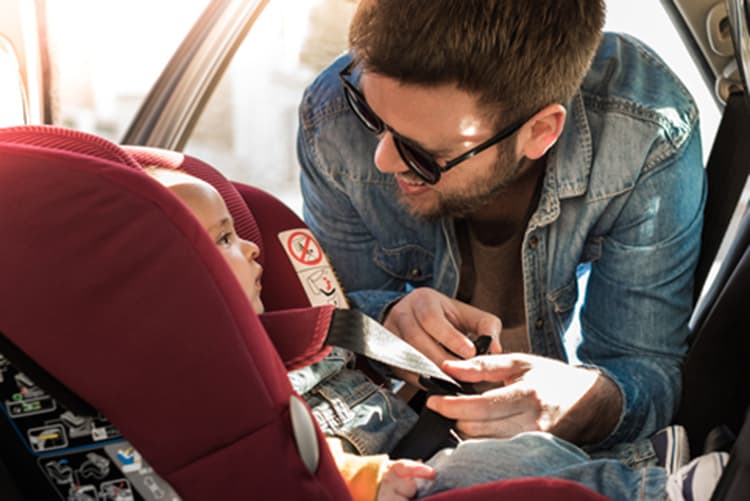
As parents, our greatest responsibility in life is looking after our children and keeping them out of harm’s way. While new parents have a lot to think about, it is important to ensure that your baby is always as safe as possible while spending time in the car.
For more detailed information on car seats and how BabyQuip handles renting car seats, car seat safety & cleaning car seats, please refer to our Car Seats page.
**This article provides information based on car seat standards and laws in the US. If you are not based in the United States, please check your local laws to make sure baby is buckled in safely every time!

Karoline is a former nutritionist, but left a corporate environment for a more free and flexible lifestyle of freelance writing. She now uses her knowledge to create informative articles like this one!


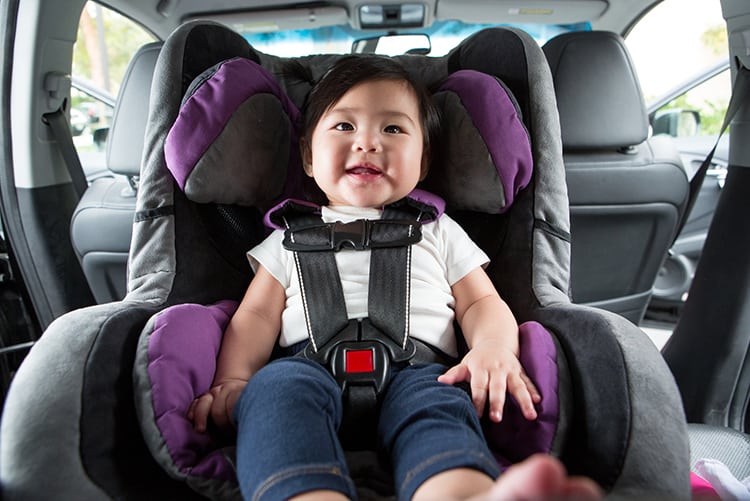
Thank you for the excellent post!
I have owned both the Graco DLX and the Chicco Keyfit that you mention here, and I loved both! But it’s great (if a little overwhelming) that there are SO many good options out there – at least you can really tailor it to your needs. I am totally intrigued by the sensor reminders – those sound like a great idea, and what a convenience to have it built into the car seat!
Thanks for pointing out that you don’t need the most expensive car seat to be safe. I opted for one mid-price range that was safe, comfy, and had great reviews.
I would also add that it is not safe to put an infant car seat in the front toddler seat area of a shopping cart. I’ve seen a few people doing this lately and was surprised that they didn’t seem to think it was unsafe!
Also, in regards to the hot car, one tip I’ve seen is to get into the habit of putting something important in the back seat, whether it be one of your shoes, your purse, your phone, etc.
A car seat inspection by a local professional is also super helpful!
Yes, there are lots of resources to help make sure car seats are properly installed. Tot Squad is a great one!
Meaghan what a good reminder – we had our infant seat professionally installed but not our latest seat. I think we need to seek out a professional again.